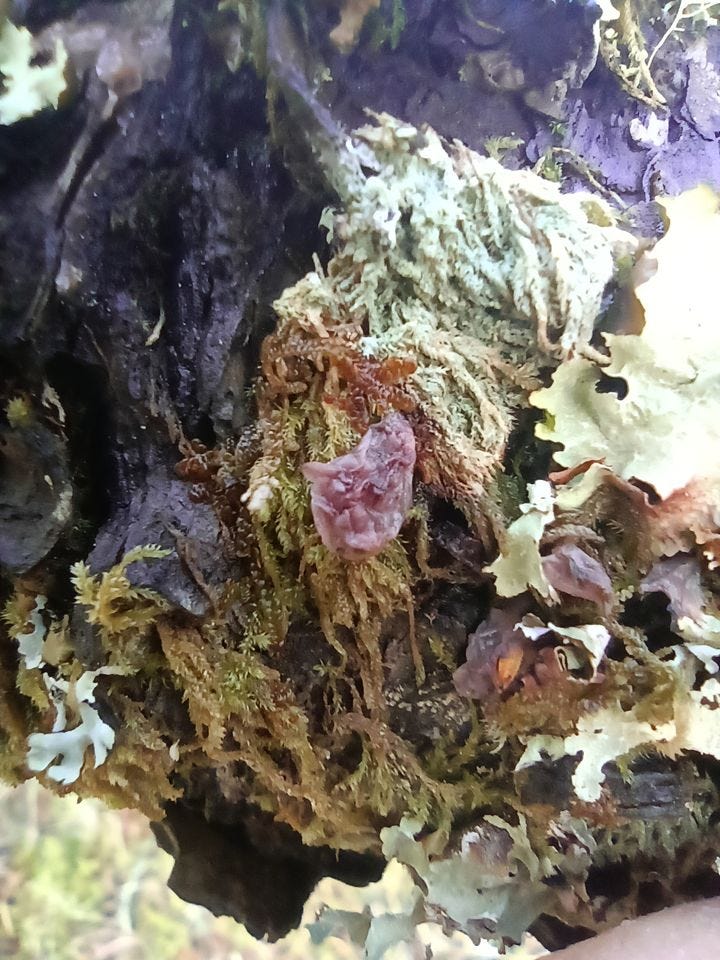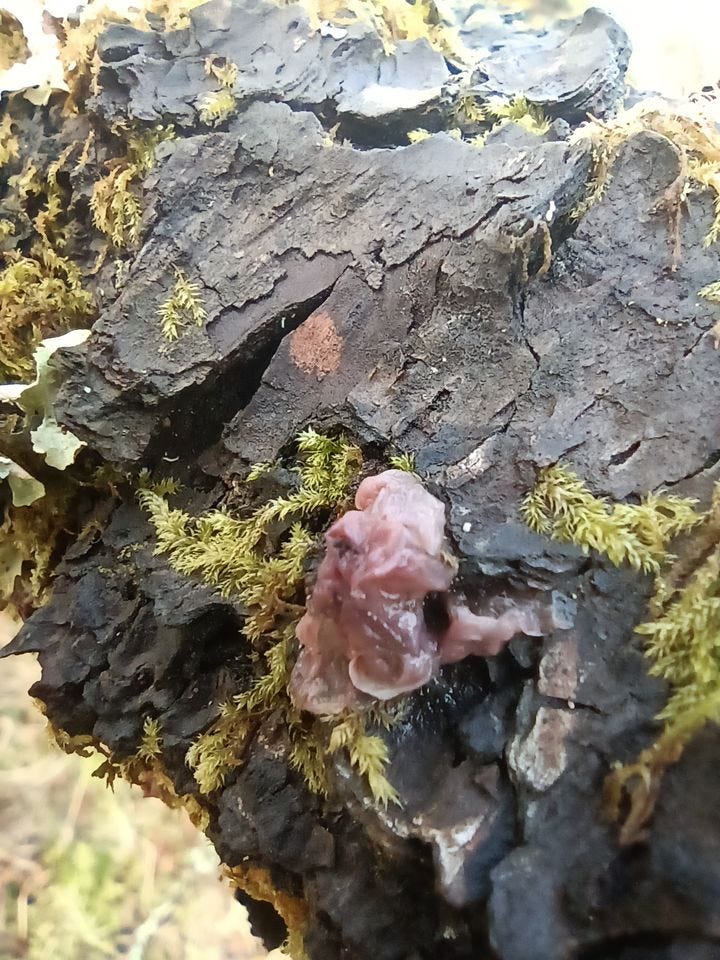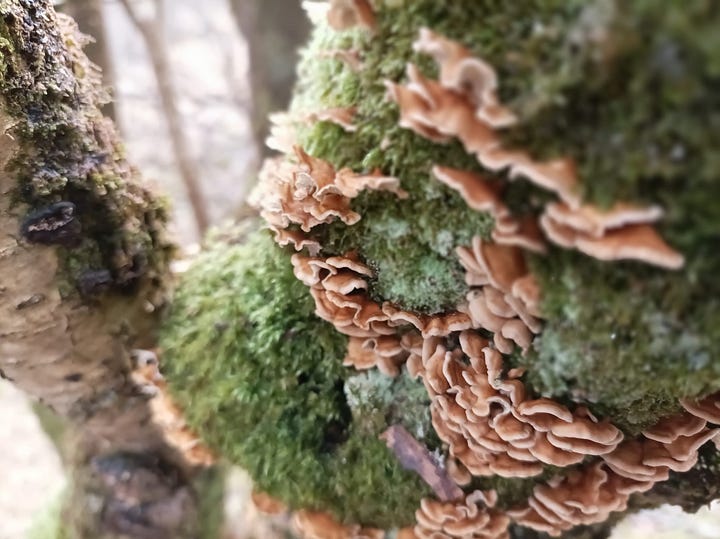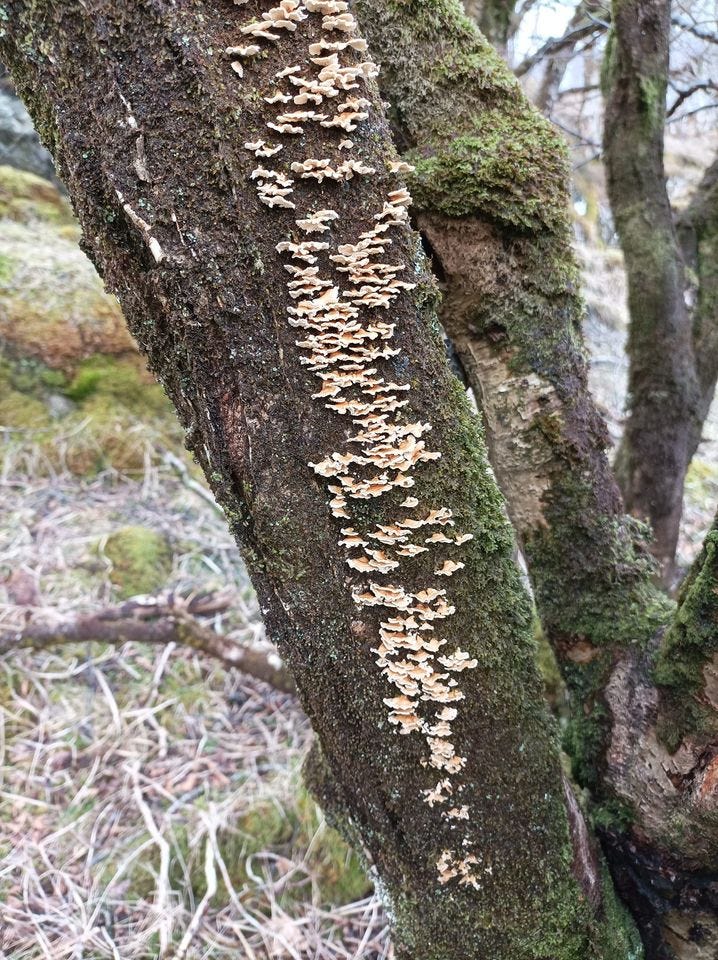The Forest's Hidden Workers: Purple Jellydisc and Crimped Gill Fungus
Andy looks in on a couple of interesting fungus finds in the Assynt woods
Nature is brimming with marvels, often hiding in plain sight, waiting for the curious eye to unravel their mysteries.
Among these, the Purple Jellydisc, (Ascocoryne sarcoides), and Crimped Gill fungus (Plicatura crispa), stand out for their distinctive appearances, however they also play some crucial roles within their ecosystems. These fungi embody the silent yet significant processes that keep our forests healthy and thriving.
The Purple Jellydisc, a gelatinous mass of pinkish or purple-colored discs, is a marvel of the fungal kingdom. Found on the bark of fallen deciduous trees, such as birch, it harbors a secret life as the fruiting body of a fungus. Its mycelium threads live symbiotically within the wood, causing no harm. This fungus produces its own antibiotics to ward off invasive fungi, protecting the tree during its lifetime. As the tree ages, the Purple Jellydisc plays a vital role in decomposition, breaking down wood to return nutrients to the soil. This perfect cycle of recycling showcases nature's efficiency and the long game played by this unique fungus.


Adding to the forest's fungal diversity, is the Crimped Gill fungus, equally fascinating. This species grows in dense, overlapping tiers on dead branches, showing a particular affinity for hazel. Its semi-circular, felty topside, adorned with tawny brown concentric zones and white edges, alongside the distinctive crimped gills on its underside, makes it a unique find for mycology enthusiasts and nature explorers. Plicatura crispa's ecological role as a white-rotting saprotroph has importance in nutrient cycling. By selectively decomposing mostly lignin (the dead wood) and leaving cellulose relatively untouched, it contributes to the decomposition process without harming living trees, acting as a beneficial organism within its habitat.
The presence of Plicatura crispa in specific geographic locations, such as Assynt in the north, points to interesting patterns of distribution and preference that can offer insights into fungal biodiversity and conservation efforts. Data from the National Biodiversity Network (NBN) serves as a valuable tool for tracking these patterns, underscoring the significance of observing and recording such species.
The discovery and study of fungi like the Purple Jellydisc and Crimped Gill highlight the importance of the fungal kingdom in our ecosystems. Their roles in decomposition, nutrient cycling, whilst protecting their host trees underline the interconnectedness of life and the subtle balances that sustain our natural world.


By bringing attention to these fungi observed recently, we not only celebrate their beauty and diversity but also remind ourselves of the vital functions they perform quietly in the background, contributing to the health and resilience of forest ecosystems. Sharing knowledge and appreciation for these organisms can inspire a deeper connection with nature and a commitment to preserving the intricate web of life that supports us all.
Andy Summers, North Highland's Senior Ranger for High Life Highland, is a dedicated naturalist with a deep understanding of the region's diverse ecosystems. His extensive experience in wildlife conservation and passion for preserving North Highland's pristine landscapes make him a vital asset. Andy's work encompasses wildlife observation, environmental education, and passing on a greater appreciation for the area's unique flora and fauna. His commitment to conserving North Highland's natural heritage is evident in his expertise and unwavering dedication.







Nature Unveiled is a fantastic record of what's going on all around. Please can I make a request that - if you have them - images of the fungii (and anything else of relevance) would be brilliant.